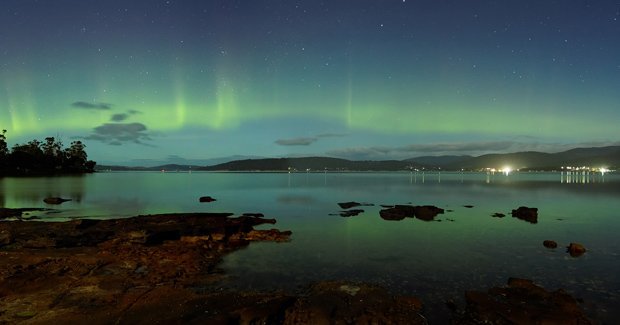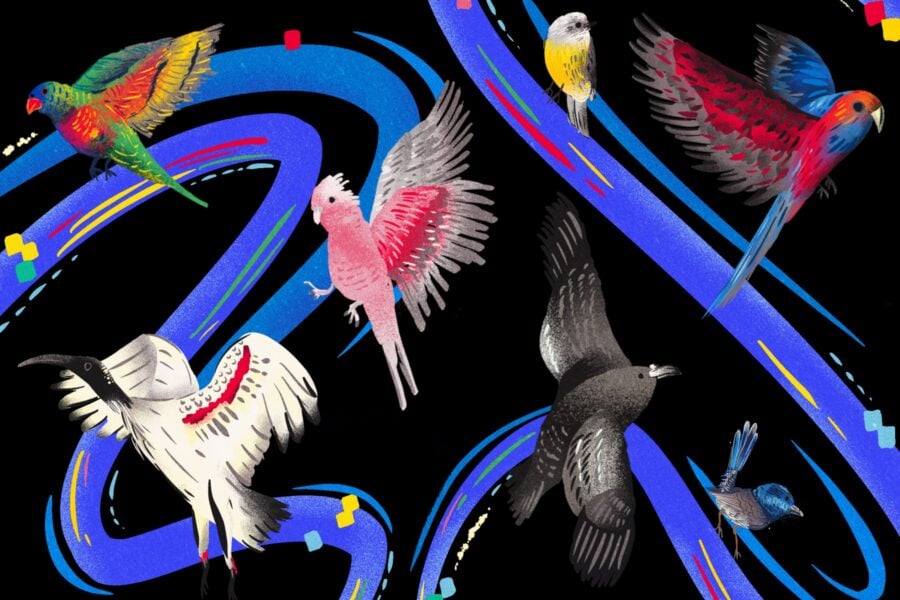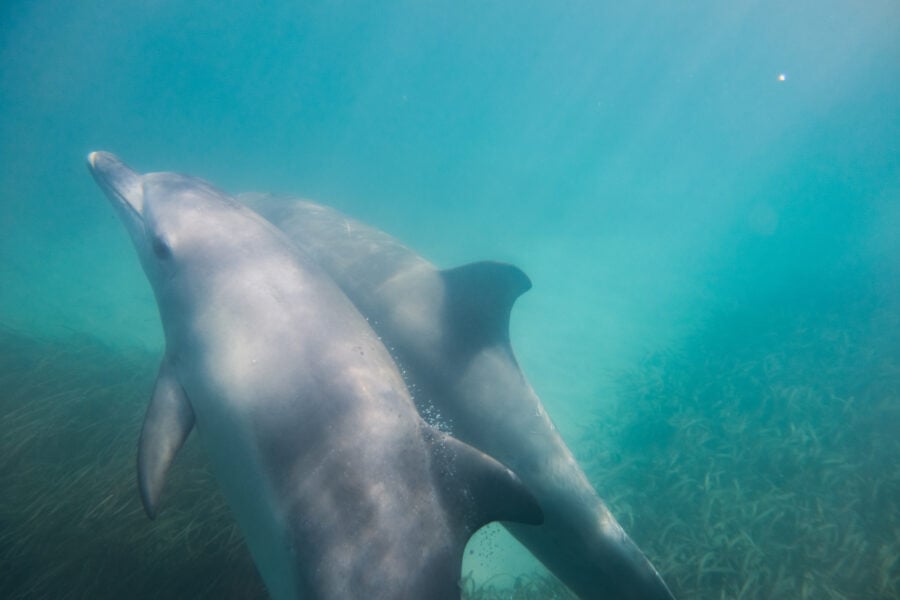Aurora Australis: chasing the southern lights

Johnno and Ian are photographers who hunt for images of the aurora australis, otherwise known as the southern lights.
I first met them loitering around a dark car park on the shore of the D’entrecasteax Channel, south of Hobart, staring up into a cloud-smothered sky. Ian’s laptop, open on the bonnet of his car, showed an infrared satellite image of cloud cover over southern Tasmania, with predictions for the next few hours.
“I remember the first aurora I ever saw,” Ian told me. “It was on a scout camp down at Sandford [on the outskirts of Hobart]. It appeared to be all the colours of the rainbow and still remains the most spectacular aurora I have ever seen.”
Dr Marc Duldig, president of the Australian Institute of Physicists, who is based at the University of Tasmania, says the best aurora he ever witnessed was in Hobart in 1979: “It was overhead, even with light pollution you could see fast-moving rays, curtains, pulsing reds and greens, right over the whole sky. It went for hours.”
How an aurora occurs
Marc says the 2013 solar maximum – a period of very high solar activity – could end what has been a relatively quiet period. “[There has been] hardly any activity at all,” he says. “We are almost up to maximum. It does this every 11 years, give or take.”
Auroras begin with a solar wind, which is a stream of charged particles continuously emitted into space from the surface of the Sun. During periods of high solar activity, sunspots form and produce coronal mass ejections (CMEs). These are like gusts of wind that can reach speeds of a few thousand kilometres per second and contain a massive amount of energy. These CMEs interact with atoms in Earth’s magnetic field to cause auroras.
Different atoms create different colours, the most common being red and green for oxygen, and green and blue for nitrogen.
“When we see auroras at the poles they tend to be just green, and they move a bit, Marc says. “When you get the storms is when you get the reds and the greens.”
Southern lights above Tasmania
I asked him what we could expect during the 2013 solar maximum. “You can’t tell,” he says. “All you need is one really good CME that’s Earth-directed and you can get an event, but then it needs to be not cloudy.”
It was 10pm in the car park when the clouds on the horizon parted for a few minutes, revealing a glow from the gaps in between.
Ian pointed south. “This is what happens. You’re about to give up and… it’s definitely on the horizon now. There it is, the faintest of greens.”
The clouds fled the scene while Johnno and Ian ran around changing lenses and looking for new angles. Meanwhile, the southern lights danced above us, their pale green reflecting off the waters of D’entrecasteaux channel.




